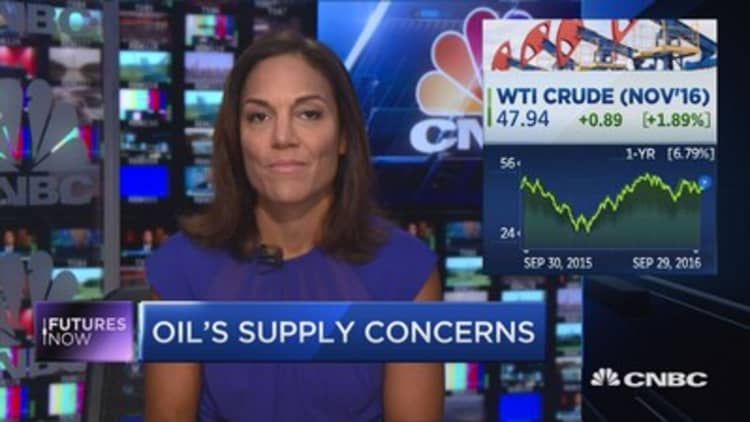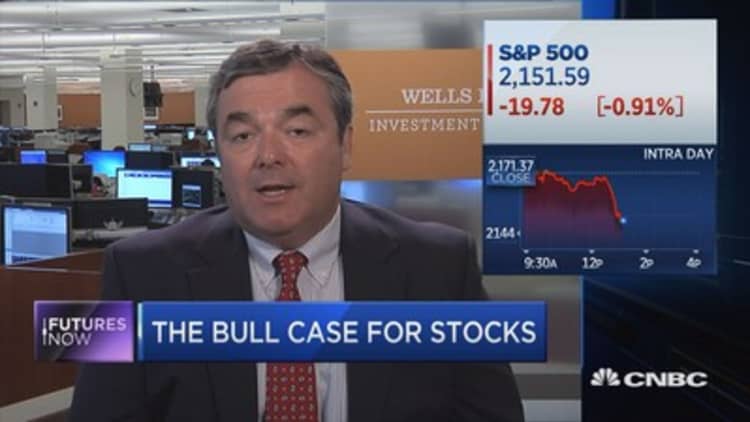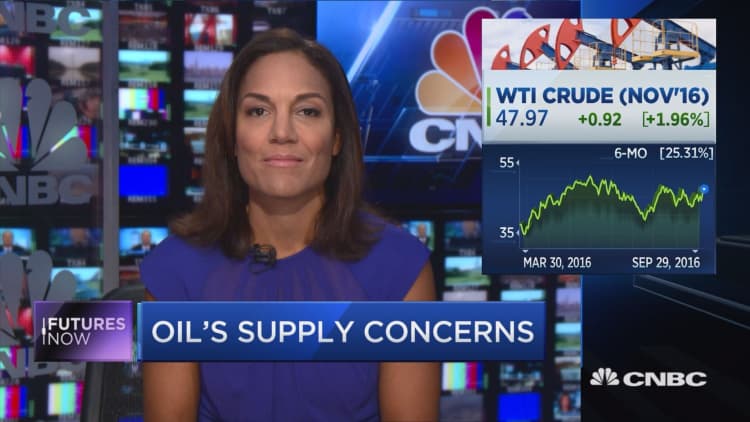


The commodities' strategist who called the rally in crude this week says more gains are to come, as Saudi Arabia appears ready to play ball and scale back production—a move likely to boost oil prices.
"This speaks to the economic realities of lower oil prices that are really biting Saudi Arabia," said top RBC commodities analyst Helima Croft on CNBC's "Futures Now" this week. The world's largest oil producer, along with other major oil producers, has struggled economically with crude languishing below $50 per barrel.
"Saudi Arabia really had to give considerable ground to accommodate the Iranian demands to get the deal done," Croft told CNBC. "This is more than just a freeze. It's actually cutting from current levels."
A deal of this nature represents the first reduction since 2008. Once announced, the deal sent crude prices soaring over 5 percent on Wednesday before closing the week above $48. Now Croft, who has been calling for $50 oil for since the 2016 lows, explained that her firm remains bullish through the end of 2016, with the notion that a floor is now in place.
"It can continue to be choppy based on weekly stats, rig count numbers and broader macro trends," she added. "But we think we are done with sub-$40, barring a major macro meltdown panic, and firms the case for 50's by year end and trending into the 60's next year."
Croft told CNBC that her firm expects the pact to hold with a belief that the Saudis are willing to bear the lion's share of the reductions needed to get down to 32.5 million barrels of oil produced each day globally by OPEC members.
The agreement, slated to go into effect in November, would require Saudi energy minister Khalid al-Falih to oversee major production cuts in order to help reduce nearly 1 million barrels from the market on a daily basis.
In a research note that claimed OPEC 'blinked', analysts at Bank of America-Merrill Lynch also said they expect oil prices to reach $60 by next year, and maintained a mid-2017 target of $70. Still, the move by OPEC underscored a new reality in world energy markets.
"We've gotten beyond the peak power generation," explained Croft when discussing why cuts from top producers are realistic. "So Saudi production tends to trend down lower anyway. They'll probably come in at their January numbers at 10.2 [million barrels a day]."
However, Croft addressed concerns that producers may now ramp production in the coming months to counter the November cuts. She strongly believes that OPEC is for real this time as members can't sustain the low price of oil for much longer.
"Saudi Arabia was serious about doing this. I think they ramped production because of peak seasonal factors. That was a Summer ramp that we saw," Croft added, referencing Saudi Arabia's record output in June.
"Saudi Arabia needs the money and I think this speaks to domestic considerations," Croft said. "That's why they made this deal."



